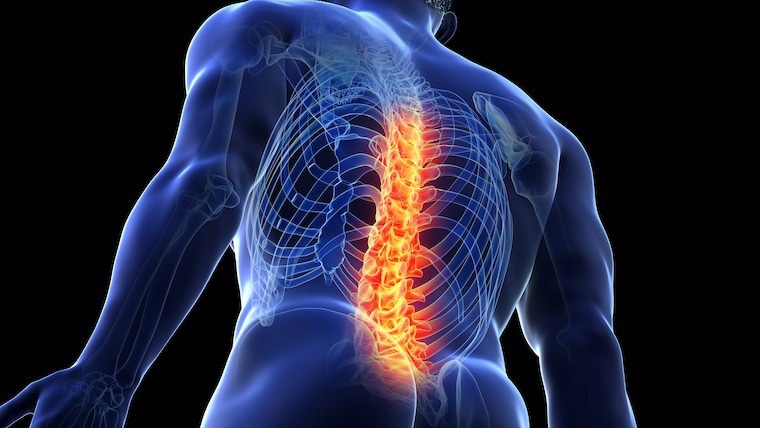New research suggests that the immune system’s ability to respond to spinal-cord injuries diminishes with age – and identifies potential avenues to improve that response and help patients heal.
 Injuries to the spinal cord can leave patients paralyzed, unable to control their bowels or suffering pain, sexual dysfunction or uncontrollable spasms, depending on the severity and location of the injury. Image Credit: UVA Health
Injuries to the spinal cord can leave patients paralyzed, unable to control their bowels or suffering pain, sexual dysfunction or uncontrollable spasms, depending on the severity and location of the injury. Image Credit: UVA Health
The new findings offer important insights into how the immune system responds to spinal-cord injuries, and why that response becomes blunted with the passing years. Further, it reveals an important role for the membranes surrounding the spinal cord in mounting the immune response to spinal-cord injury. With this information, doctors one day may be able to bolster the body’s natural immune response to improve patient outcomes, particularly among older adults.
Recently, it has been reported more aging individuals experience spinal cord injuries. Our findings suggest in aging, there is an impairment in how the immune response is initiated and resolved compared to young. Hopefully, our results can help identify points of intervention and druggable targets that can improve recovery and address long-term consequences of injury such as pain.”
Researcher Andrea Francesca M. Salvador, PhD, University of Virginia School of Medicine.
Understanding Spinal-Cord Injuries
Spinal-cord injuries can have devastating, lifelong effects, leaving patients unable to move, unable to control their bowels or suffering pain, sexual dysfunction or uncontrollable spasms, depending on the severity and location of the injury. Better understanding how the body responds to spinal-cord injuries is an important step in developing better ways to treat them.
The new findings are the latest from the lab of Jonathan Kipnis, PhD, who made a stunning discovery while at UVA in 2015 that the brain was connected to the immune system by vessels long thought not to exist. Prior to this game-changing revelation, the brain had been held to be essentially walled off from the immune system. The discovery of the unknown vessels in the membranes, or meninges, surrounding the brain rewrote textbooks and opened a whole new frontier in neurological research. Today, “neuroimmunology,” or the study of the nervous system’s relationship to the immune system, is one of the hottest areas of neuroscience research, and it is poised to transform our understanding of – and ability to treat – a vast array of neurological diseases.
Now Salvador, Kipnis and their collaborators have determined that the meninges surrounding the spinal cord play an essential role in the immune response to spinal-cord injury. They discovered, for example, that previously unknown meningeal lymphatic “patches” form above the site of spinal-cord injuries. More research is needed to determine exactly what these structures do, but their formation speaks to an important role for the spinal-cord meninges in the immune response to injury.
Further, Salvador and her collaborators quantified how immune cells respond to spinal-cord injuries. They found that this response was much stronger in young lab mice than in older ones, suggesting that scientists may be able to target certain immune cells to improve recovery after spinal-cord injuries.
Together, the findings identify the spinal-cord meninges – and their interactions with other components of the central nervous system – as exciting new areas for researchers to explore as they seek to better understand the body’s complex response to spinal-cord injuries.
“This is an exciting finding and one which may indeed lead to new therapeutic approaches for spinal cord-injury patients. We are now collaborating with clinicians in a hope to better understand what is happening in human patients and how our findings could be translated to make a real difference.”
Kipnis, Professor, Washington University School of Medicine in St. Louis and Director of its Brain Immunology and Glia Center (BIG Center).
Findings Published
The researchers have published their findings in the scientific journal Neuron. The team consisted of Salvador, Taitea Dykstra, Justin Rustenhoven, Wenqing Gao, Susan M. Blackburn, Kesshni Bhasiin, Michael Q. Dong, Rafaela Mano Guimarães, Sriharsha Gonuguntla, Igor Smirnov, Kipnis and Jasmin Herz. The researchers report no financial interests in the work.
The research was supported by a Howard Hughes Medical Institute Medical Research Fellowship and by the National Institutes of Health, grants AT010416, AG034113, NS096967 and AG057496.